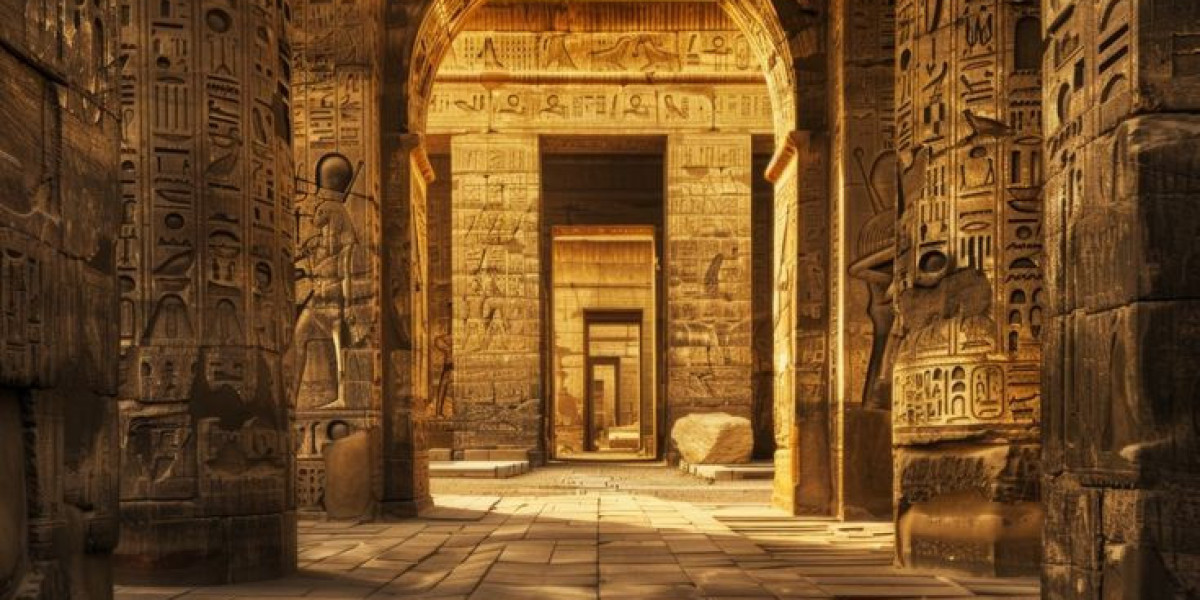Aswan, located in the southernmost part of Egypt, is home to several significant temples, each reflecting the grandeur and intricacy of ancient Egyptian architecture. These temples, built during various periods of Egypt’s history, offer incredible insights into the religious practices, culture, and engineering skills of the ancient Egyptians. Some of the most famous temples in the Aswan region include the Temple of Philae, the Temple of Kalabsha, and the Temple of Kom Ombo, each with its own unique history and significance.
1. Temple of Philae
Philae Temple, located on the beautiful Agilkia Island near Aswan, is one of the most well-preserved and stunning temples in Egypt. It was dedicated to Isis, the goddess of magic and motherhood, and served as a major religious center during the Greco-Roman period.
Relocation of the Temple: The temple was originally located on the island of Philae, but due to the construction of the Aswan High Dam in the 1960s, the temple was at risk of being submerged by the rising waters of Lake Nasser. To preserve it, the entire complex was carefully relocated to Agilkia Island, where it remains a top tourist attraction today.
Architecture and Features: The temple is famous for its beautiful pylon, hypostyle hall, and sanctuary. It also features detailed reliefs and inscriptions depicting Isis, Osiris, and various pharaohs offering sacrifices to the gods. The most famous image in the temple is the depiction of the goddess Isis, the central figure of the cult of Philae.
Sound and Light Show: In the evening, Philae Temple hosts a dramatic Sound and Light Show, narrating the temple's history and its importance in the ancient Egyptian religious world.
2. Temple of Kalabsha
The Temple of Kalabsha is a Nubian temple located about 50 kilometers south of Aswan, near the shores of Lake Nasser. It was originally built during the Roman period by Augustus and dedicated to the Nubian god Mandulis.
Construction and Relocation: The temple was constructed with sandstone and showcases classical Roman architecture, with columns and a grand pylon. When the Aswan High Dam was built, the temple was at risk of being flooded, so it was dismantled and relocated to its current position at New Kalabsha, just above the lake, with assistance from UNESCO.
Significance: Kalabsha was once the principal Nubian temple and was worshipped for centuries by the local population. The temple has impressive wall carvings of Mandulis and various Roman and Egyptian gods.
3. Temple of Kom Ombo
The Temple of Kom Ombo is located about 45 kilometers north of Aswan, and it is unique because it is actually a double temple dedicated to two gods: Sobek, the crocodile god, and Horus the Elder, the falcon-headed god.
Architectural Layout: The temple’s unusual design includes two symmetrical entrances, two hypostyle halls, and two sanctuaries, one for Sobek and the other for Horus. Each side of the temple was dedicated to one of the gods, with identical rooms, halls, and courtyards.
Significance of the Gods: Sobek was a god of fertility, water, and the Nile, often associated with crocodiles, while Horus represented kingship and the sky. The temple reflects the blending of these two deities’ worship, highlighting the dual nature of the ancient Egyptian spiritual world.
Crocodile Mummies: In the temple’s area, archaeologists have uncovered the remains of crocodiles, which were mummified and worshipped as part of Sobek’s cult. There is a museum near the temple where visitors can see the mummified crocodiles and other artifacts from the site.
4. Temple of Abu Simbel
Although not located directly in Aswan, Abu Simbel is one of the most famous temples associated with the region. It is situated around 280 kilometers south of Aswan, near the border with Sudan.
Built by Ramses II: The two temples at Abu Simbel were built by Ramses II in the 13th century BC. The Great Temple is carved into the mountainside and features four colossal statues of Ramses II at its entrance. The smaller temple is dedicated to Hathor and Ramses’ queen, Nefertari, and also features impressive statues of the royal couple.
Relocation Project: Like Philae Temple, Abu Simbel was also threatened by the rising waters of Lake Nasser. The entire site was relocated to a higher position above the lake in the 1960s, making it one of the most remarkable archaeological relocation projects in history.
Sunrise Phenomenon: One of the temple’s most unique features is the way sunlight illuminates the statues in the temple’s inner sanctuary during the sun’s rising in October and February, highlighting the deified pharaoh and his connection to the divine.
El Gouna The Red Sea’s Hidden Gem for Spa and Relaxation
Spa Services in Hurghada From Makadi Bay to Soma Bay and El Gouna
Exploring Ancient Egyptian Treasures
5. Temple of Edfu
While not directly in Aswan, the Temple of Edfu is located about halfway between Luxor and Aswan, and is worth a visit. It is dedicated to the god Horus, the falcon-headed god of the sky and protector of the pharaohs.
- The Largest Temple: The Temple of Edfu is one of the best-preserved temples in Egypt and one of the largest, with detailed reliefs depicting scenes of Horus and his battles with Seth, the god of chaos. The temple’s structure, pylon, hypostyle hall, and inner sanctuary are all well-preserved, providing visitors with a rare glimpse into ancient Egyptian religious practices.
Conclusion: The Temples of Aswan
The temples of Aswan are not only extraordinary examples of ancient Egyptian architecture but also symbols of the profound religious and cultural legacy of this great civilization. From the grand, relocated temples of Philae and Abu Simbel to the unique dual temple of Kom Ombo, each temple in the Aswan region offers a deeper understanding of the gods, pharaohs, and daily life in ancient Egypt.
For travelers to Egypt, visiting these temples is a chance to connect with the past and witness firsthand the grandeur of Egypt’s religious and architectural achievements. Whether you're exploring the mysterious waters of Philae or standing in awe of the colossal statues at Abu Simbel, the temples of Aswan are a must-see part of any Egyptian journey.








